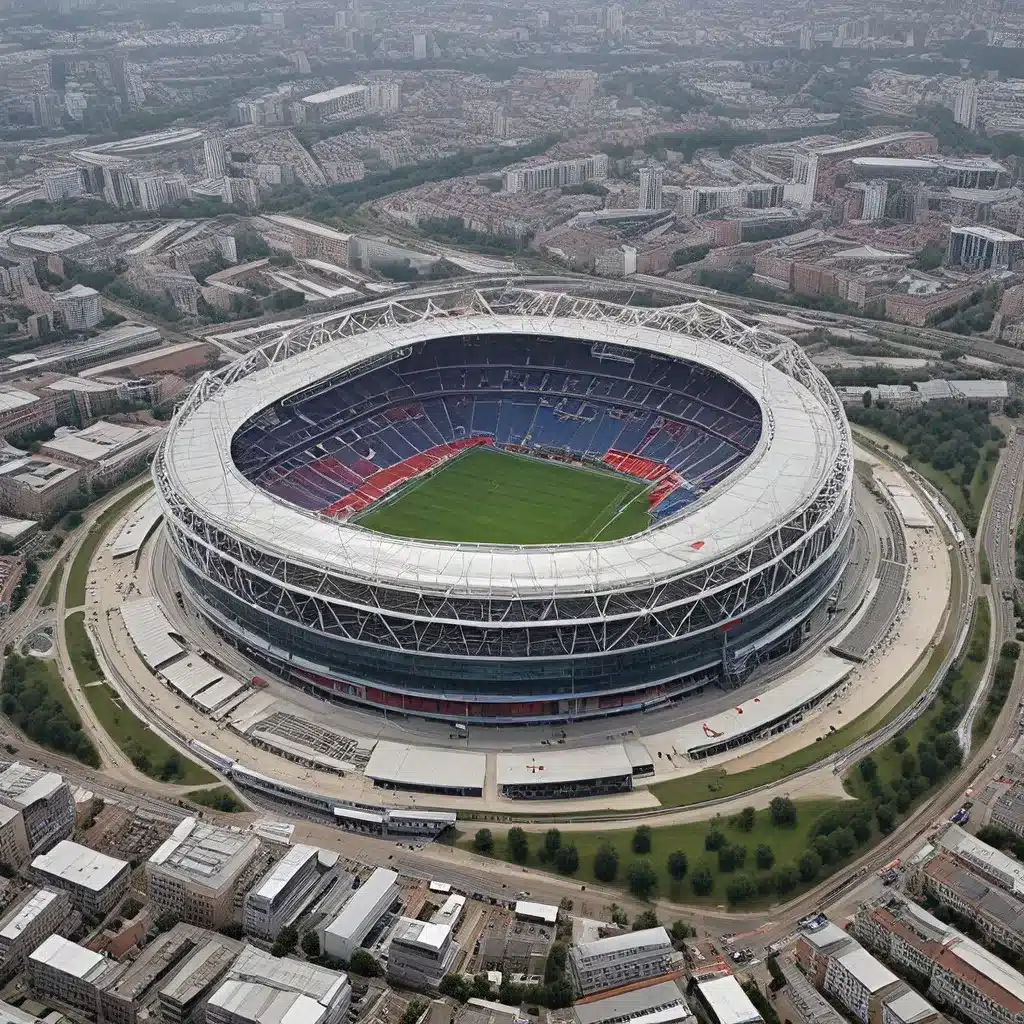
The Iconic Status of Wembley Stadium
Wembley Stadium stands as a testament to the enduring legacy of football and the power of sports to captivate the hearts and minds of people around the world. Located in the borough of Brent, London, this iconic venue has been a symbol of national pride and sporting excellence since its inception in 1923. With a seating capacity of over 90,000 spectators, Wembley Stadium is not just a mere football arena, but a architectural marvel and a cultural landmark that has witnessed some of the most historic and unforgettable moments in the annals of the beautiful game.
The stadium’s distinctive arch, standing tall at a height of 133 meters, has become a recognizable symbol of its grandeur and a beacon of sporting prowess. This engineering masterpiece, the longest single-span roof structure in the world, serves as a visual reminder of the stadium’s prominence and its enduring legacy as a global sporting destination.
The Storied History of Wembley Stadium
Wembley Stadium’s history is inextricably woven with the rich tapestry of English football and the national team’s triumphs. The original Wembley Stadium, built in 1923, was the stage for the first-ever FA Cup Final played at the venue, setting the tone for the stadium’s role as a hallowed ground for the sport.
One of the most significant events in Wembley’s history was the 1966 FIFA World Cup Final, where the England national team secured their first and only World Cup victory. This historic moment, etched in the minds of football fans worldwide, cemented Wembley’s status as a global icon and a symbol of the country’s footballing prowess.
Over the years, Wembley Stadium has witnessed a parade of legends gracing its hallowed turf, from the Busby Babes of Manchester United to the Class of 92, each leaving an indelible mark on the stadium’s legacy. The stadium’s corridors are adorned with tributes to iconic figures, paying homage to their contributions and inspiring generations of athletes and fans alike.
The Architectural Marvels of Wembley Stadium
The new Wembley Stadium, which opened in 2007 after an extensive renovation, is a modern marvel of engineering and design. The iconic arch, a visible symbol of the stadium’s grandeur, is not only a stunning architectural feature but also serves a practical purpose, supporting the stadium’s vast roof structure and providing protection from the elements for the spectators.
The stadium’s state-of-the-art facilities and cutting-edge technology further enhance the spectator experience. From advanced scoreboards and sound systems to eco-friendly features like rainwater harvesting, Wembley Stadium has set a new standard for stadium design and sustainability.
The vast seating capacity of Wembley Stadium, capable of accommodating over 90,000 spectators, creates an electrifying atmosphere during major events. The roof-covered seating provides protection from the weather, ensuring that spectators can fully immerse themselves in the action and excitement of the events.
Wembley Stadium: A Versatile Venue
While Wembley Stadium is renowned for its football heritage, the venue is not limited to just the beautiful game. It has also played host to a diverse array of events, including rugby matches, American football games, and major music concerts. From the memorable performances of Queen in 1986 to the iconic shows by Madonna, Beyoncé, and U2, Wembley Stadium has established itself as a premier destination for world-class entertainment.
The stadium’s adaptability and versatility have contributed to its enduring legacy, making it a hub for various sporting and entertainment events. Whether it’s the FA Cup Final, an England international match, or a headline-grabbing concert, Wembley Stadium continues to captivate audiences with its unparalleled atmosphere and rich history.
Wembley Stadium: A Beacon of Community Engagement
Wembley Stadium’s significance extends beyond its role as a sporting and entertainment venue. The stadium has actively engaged with the local community, organizing various initiatives and programs to foster a sense of belonging and community pride. From charitable events to community sports programs, Wembley Stadium has positioned itself as a catalyst for positive change, transcending its boundaries as a mere sports arena.
The stadium’s interactive experiences, such as the Wembley Stadium Tour, allow visitors to immerse themselves in the venue’s history and explore the hallowed grounds where legends have been forged. This unique opportunity to walk in the footsteps of sporting icons and lift the FA Cup further enhances the connection between the stadium and its devoted fans.
Wembley Stadium: A Continued Legacy of Excellence
As the spiritual home of English football and a beacon of sporting heritage, Wembley Stadium continues to inspire awe and reverence among football enthusiasts and sports fans worldwide. The stadium’s rich history, architectural marvels, and state-of-the-art facilities have cemented its status as a global landmark, captivating generations of visitors and leaving an indelible mark on the collective consciousness of the sporting world.
Whether it’s the roar of the crowd during a thrilling FA Cup Final, the echoes of Youll Never Walk Alone at an England international, or the electrifying energy of a world-class music concert, Wembley Stadium continues to be a revered and cherished destination for sports and entertainment enthusiasts alike. Its legacy transcends borders and inspires individuals to strive for greatness, making it an iconic symbol of the enduring power of sports and the human spirit.

